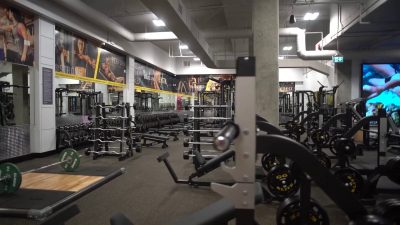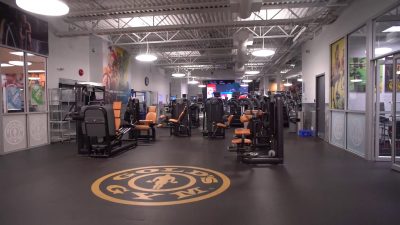Can you lose weight on just $50 a week for food?
Many people think you need expensive organic foods and fancy supplements for weight loss. This idea stops many of us from getting fit while on a budget. But what if that’s not true?
We’re here to show that losing weight without spending a lot is doable and effective.
Meet Gordon Cheung, a top trainer at Gold’s Gym West Broadway. Gordon knows his stuff: he’s a NASM Certified Personal Trainer and a specialist in making workouts and diets work together. He’s the right person to help bust the myth that eating well for weight loss has to be pricey.
In this guide, we’ll share Gordon’s tips on eating right and losing weight while keeping your wallet happy at the same time.
Enter Name & Email to
The Unlock Guide
Key Takeaways From Our Interview With Gordon
From Gordon Cheung’s interview, here’s what you need to know for a budget-friendly weight loss plan:
Prepare your meals ahead of time to cut down on buying expensive fast food.
Plan your meals, especially dinner, for better energy and savings.
Weight Loss in a Nutshell
Gordon starts by breaking down how weight loss really works. It’s all about creating a calorie deficit – burning more calories than you eat. Think of it like a fun balancing game.
You can create a deficit by eating nutritious foods but don’t pack many calories. And, pair that with activities that get your heart rate up. This combo is the secret sauce for losing weight.
But you might need to look beyond pure weight loss and consider body recomposition. The two are different but related concepts. While weight loss focuses on reducing the number on the scale, body recomposition is about changing what your body is made of. It’s about losing fat and gaining muscle at the same time. This might mean your weight doesn’t change much, but your body looks and feels different – more toned and fit.
Remember, it’s not a race. Slow and steady changes are the way to go for lasting results.
Grocery Shopping Hacks

In our interview with Gordon Cheung, he shared some great grocery shopping hacks for a budget-friendly weight loss diet:
Bulk Buying
Gordon advises, “If you’re on a budget, the key thing is to purchase in bulk because you will be saving a little bit more money when you’re purchasing more items at once.” Buying larger quantities of staple foods like lean meats, whole grains, and legumes is more cost-effective. It’s not just about saving money but also about having a consistent supply of healthy meal ingredients.
Also, consider items like dried beans and nuts that offer the flexibility to create various healthy meals.
Choosing Frozen Options
“Instead of buying fresh produce or fresh meats as well, you could go with the frozen route as well. Of course you would prefer to have fresh foods in your body but if it’s more of a cost effective, if it’s more of a cost situation, then yes, you can go with the frozen options,” Gordon points out.
Frozen fruits and vegetables are often flash-frozen at peak ripeness, locking in their nutrients, and because they are frozen, they do not spoil. They offer the same benefits as fresh produce but at a more affordable price. This is especially helpful when certain produce is out of season.
Frozen produce is ideal for smoothies, stir-fries, or as side dishes. Plus, you won’t have the pressure to use them immediately, reducing food waste.
Cost-Effective Carbohydrates
Gordon suggests affordable carbs like oats and rice, which are versatile and filling. He specifically mentions steel-cut oats and large bags of rice as smart, budget-friendly choices. These carbs can be the base for various meals, from breakfast porridges to hearty dinner bowls, giving you nutrition and satisfaction without overspending.
The Importance of Protein in Weight Loss
Now we’ll dive into why protein is so important for your weight loss and fitness journey, backed by insights from our Gold’s Gym expert, Gordon Cheung:
Protein for Muscle Recovery and Growth
Gordon emphasizes the need for adequate protein in every meal. This is crucial for repairing and building muscles, especially after your workouts. You can buy affordable sources like chicken, canned tuna, eggs, and cottage cheese.
An effective strength workout leads to stronger muscles, increasing your metabolism and ultimately boosting your weight loss. Gordon points out, “making sure that each one of your meals contains an adequate amount of protein…is key for muscle recovery, muscle growth, and also keeping your energy levels high.”
Maintaining Energy Levels with Protein
A protein-rich diet helps in maintaining stable energy levels throughout the day. You’re less likely to feel energy dips and turn to unhealthy snacks. Including proteins like lean meats, fish, legumes, and dairy products in your meals can help control hunger and energize you.
Recommended Protein Intake Throughout the Day
Gordon advises spreading your protein intake evenly across your meals. He suggests “30 to 50 grams of protein at each meal.” This consistent intake helps your body maintain muscle and satiety, supporting weight loss goals.
Weight Loss for Beginners
A weight loss journey can feel overwhelming, especially for beginners. The insights below will make it a whole lot easier and more sustainable.
Meal Prep for Savings and Health
Preparing meals in advance is a fantastic way to avoid the temptation of expensive and often unhealthy fast food. By having ready-to-eat food available, especially for dinner, you save money while making better dietary choices. This simple habit promotes convenience and allows you to control the ingredients and quality of your meals.
Balancing Diet and Exercise
Gordon stresses balancing a nutritious diet with an effective workout regimen. For those starting, combining strength training and cardio is essential. This blend helps you build muscle and enhances overall fitness and weight loss.
Protein’s Role in Your Diet
According to Gordon, “having an adequate amount of protein is one aspect of the weight loss plan that most beginners should be implementing.” Protein is crucial for muscle recovery, growth, and maintaining energy levels.
Customization for Success
It’s important to find a routine that works for you. Gordon advises finding a diet plan that is sustainable and enjoyable. “The best advice I can really give is to find a diet plan that is the most sustainable for someone’s specific needs and as least restrictive as possible.“ Tailoring your journey to your personal preferences ensures long-term commitment and success.
Beyond the Scale: Understanding Body Composition

In this section, Gordon Cheung highlights the importance of focusing on body composition rather than just the number on the scale.
This concept is crucial because muscle weighs more than fat, so even if the scale number doesn’t drop significantly, you could still lose fat and gain muscle, which is a positive change.
Gordon points out that weight loss isn’t just about the scale. He explains, “It’s more about your body composition itself.” This perspective is vital because as you embark on your weight loss journey, the scale may not always reflect the true progress.
The scale only shows total body weight, not distinguishing between muscle, fat, and water weight. This is why measuring body composition – fat, muscle, and water percentages – is a more accurate way to track your progress.
To illustrate this point, imagine someone who starts weight training and healthy eating. Over time, they might not see a huge drop in scale weight. But, their clothes fit better, and they notice a more toned appearance. This is because of improved muscle mass and reduced body fat, or “body recomposition.”
Understanding and focusing on body composition rather than just the scale can lead to a more rewarding and accurate depiction of your health and fitness journey.
Affordable, Nutrient-Dense Foods
Finding nutrient-dense but affordable foods is easier than you think. You don’t need to go after the “organic” varieties or follow trends that die out after the novelty. The average grocery list of chicken, eggs, yogurt, and so on is packed with nutrients; we just take them for granted.
Here is a list of affordable, nutrient-dense foods along with their approximate caloric value, protein, fat, and carbohydrate values per 100 grams:
| Food Item | Calories (kcal) | Protein (g) | Fat (g) | Carbohydrates (g) |
| Broccoli | 31 | 2.6 | 0.3 | 6.0 |
| Spinach | 23 | 2.9 | 0.4 | 3.6 |
| Brown Long-grain Rice | 367 | 7.5 | 3.2 | 76.0 |
| Oatmeal | 389 | 17.0 | 6.9 | 66.0 |
| Bananas | 89 | 1.1 | 0.3 | 22.8 |
| Apples | 52 | 0.3 | 0.2 | 13.8 |
| Oranges | 47 | 0.9 | 0.1 | 11.8 |
| Eggs | 143 | 13.0 | 10.0 | 0.8 |
| Egg Whites | 52 | 11.0 | 0.2 | 0.7 |
| Low Fat Greek Yogurt | 73 | 10.0 | 1.9 | 3.9 |
| Peanut Butter | 588 | 25.0 | 50.0 | 20.0 |
| Bread | 265 | 9.0 | 3.2 | 49.0 |
| Ground Beef | 250 | 26.0 | 15.0 | 0 |
| Canned Salmon | 206 | 20.5 | 13.3 | 0 |
| Chicken Breast | 165 | 31.0 | 3.6 | 0 |
| Pork Chops | 231 | 25.7 | 14.0 | 0 |
Note: These foods’ caloric values and macronutrient content are approximate and can vary based on preparation method and specific variety. The protein, fat, and carbohydrate values are based on the general understanding that carbohydrates and protein provide 4 calories per gram, while fat provides 9 calories per gram. The specific values for each food item can be found in detailed nutritional databases or on food packaging labels.
Personalizing the Diet Plan
As mentioned before and emphasized by Gordon, creating a diet plan you can stick to involves understanding your needs and preferences.
Remember “The Biggest Loser”? That show where people lost a lot of weight super fast? Well, here’s a shocker: most of them gained the weight back, and some even got heavier than they were at the start. This is why a sustainable and personalized approach is important.
Your diet plan should not just be about shedding pounds quickly; it should fit into your life comfortably, reflecting your tastes, lifestyle, and nutritional needs.
Here’s how to make your diet plan work for you:
- Assess Your Lifestyle: Consider your daily routine. If you’re always on the go, plan simple, quick meals. If you enjoy cooking, explore new healthy recipes.
- Know Your Preferences: If you love certain foods, find healthier versions. Enjoy sweets? Try fruit-based desserts. Love pasta? Switch to whole-grain options.
- Set Realistic Goals: Don’t aim for drastic changes overnight. Start with small, achievable goals like adding more vegetables to your meals or reducing processed foods.
- Listen to Your Body: How different foods make you feel. If certain foods don’t agree with you, it’s okay to avoid them.
- Enjoy the Process: Make your diet journey enjoyable. Experiment with new recipes, try different healthy foods and don’t be too hard on yourself if you indulge occasionally.
Conclusion
So, can you effectively lose weight on a budget of just $50 a week for food? Coach Gordon, a NASM Certified Personal Trainer and Master Trainer from Gold’s Gym West, answers with a resounding YES.
Throughout this post, we’ve shared Gordon’s expertise on affordable yet nutritious food choices, the importance of protein, and the value of understanding body composition over scale numbers. We’ve also provided practical tips for beginners and strategies for personalizing your diet plan.
We highly encourage you to download the complete weight loss guide from Gold’s Gym to support your weight loss journey further. This comprehensive guide includes in-depth information on:
- Common myths
- Body recomposition basics
- Nutrition
- Cultivating healthy habits
- Understanding supplementation
Each section is designed to provide you with a deeper understanding and practical tips to enhance your fitness journey. This guide is invaluable for anyone looking to achieve sustainable and effective weight loss.

![Budget-Friendly Weight Loss: Coach Gordon’s Expert Insights [+ FREE GUIDE]](https://goldsgymbc.ca/wp-content/uploads/2024/02/Email-Header-2000px-NEW2.jpg)

 WEST BROADWAY
WEST BROADWAY UNIVERSITY MARKETPLACE
UNIVERSITY MARKETPLACE COQUITLAM
COQUITLAM LANGLEY
LANGLEY